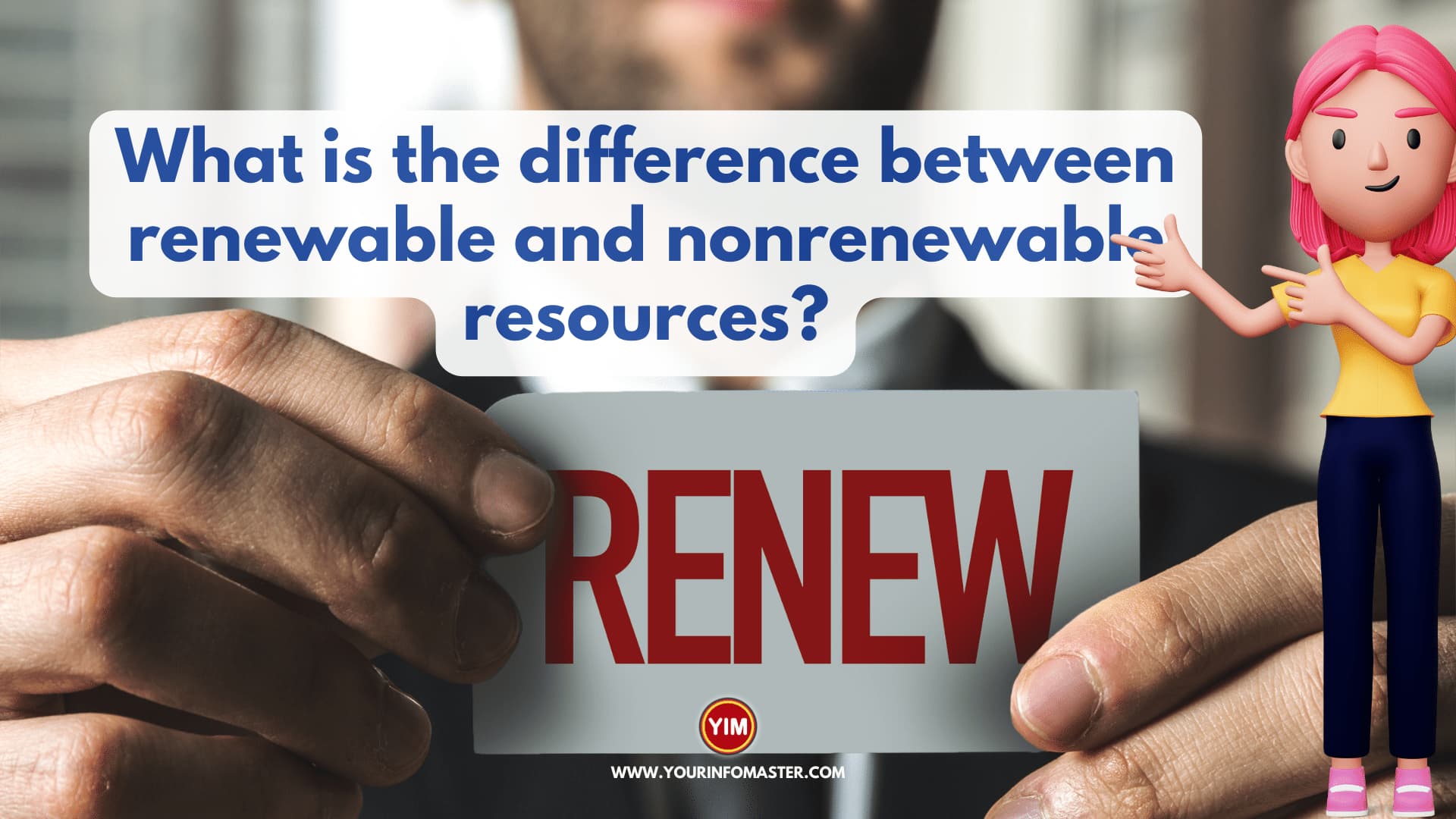I am going to explain the blog post “What is the difference between renewable and nonrenewable resources?“
Renewable and nonrenewable resources are the two main categories of natural resources that we use for various purposes in our daily lives. It is important to understand the difference between these two types of resources in order to make informed decisions about their use and conservation.
Renewable resources are those that can be replenished naturally over time, while nonrenewable resources are finite and will eventually run out. In this blog post, we will explore the key differences between renewable and nonrenewable resources and why it is important to preserve these resources for future generations.
Renewable and nonrenewable resources are important buzzwords in today’s world, where the demand for energy, food, and other natural resources is increasing at an alarming rate. The difference between these two types of resources is vital to our understanding of how we can sustainably manage our resources and preserve them for future generations.
Check also: What is the difference between ACT and SAT?
10 Differences between renewable and nonrenewable resources
Here is a list of 10 differences between renewable and nonrenewable resources:
- Renewability
- Abundance
- Extraction and Processing
- Environmental Impact
- Cost
- Energy Density
- Storage
- Lifespan
- Dependence on Technology
- Availability
Check also: What is the difference between a recession and a depression?
Detail of 10 Differences between renewable and nonrenewable resources
Here is the detail of 10 differences between renewable and nonrenewable resources:
- Renewability: The most obvious difference between renewable and nonrenewable resources is that renewable resources can be replenished over time, while nonrenewable resources are finite and will eventually run out. Renewable resources include solar, wind, hydropower, geothermal, and biomass, while nonrenewable resources include fossil fuels such as coal, oil, and natural gas.
- Abundance: Renewable resources are generally more abundant than nonrenewable resources. For example, the sun provides more energy in one hour than the world uses in a year, while nonrenewable resources such as coal and oil are becoming increasingly scarce.
- Extraction and Processing: Renewable resources are generally easier to extract and process than nonrenewable resources. For example, solar panels can be installed on rooftops and wind turbines can be erected on hillsides, while the extraction and processing of fossil fuels requires significant drilling and refining processes.
- Environmental Impact: Renewable resources generally have a lower environmental impact than nonrenewable resources. For example, solar and wind power generate electricity without producing greenhouse gas emissions or other pollutants, while the extraction and use of fossil fuels are major contributors to climate change and other environmental problems.
- Cost: Renewable resources are becoming increasingly cost-competitive with nonrenewable resources, especially as the cost of renewable technology continues to decrease. For example, the cost of solar panels has dropped by more than 80% in the past decade, making solar power more affordable than ever before.
- Energy Density: Nonrenewable resources generally have a higher energy density than renewable resources. For example, a gallon of gasoline contains significantly more energy than a gallon of ethanol or biodiesel.
- Storage: Renewable resources are often intermittent, meaning they are not always available when needed. For this reason, storage technologies such as batteries and pumped hydroelectric storage are becoming increasingly important for the integration of renewable resources into the grid.
- Lifespan: Renewable resources generally have a longer lifespan than nonrenewable resources. For example, a solar panel can last for 25-30 years, while a coal-fired power plant may only last for 30-40 years.
- Dependence on Technology: Renewable resources are highly dependent on technology, such as solar panels, wind turbines, and hydropower dams. Nonrenewable resources, on the other hand, can be used without significant technological advancements.
- Availability: Renewable resources are generally more widely available than nonrenewable resources. For example, the sun shines everywhere and the wind blows in many places, while nonrenewable resources are often located in specific regions or countries, leading to dependence on foreign sources of energy.
Check also: What is the difference between qualitative and quantitative?
Conclusion
In conclusion, the difference between renewable and nonrenewable resources is crucial to understanding how we can sustainably manage our resources and preserve them for future generations. Renewable resources have many advantages over nonrenewable resources, including their renewability, abundance, lower environmental impact, and increasing cost competitiveness. However, nonrenewable resources still play a significant role in our energy mix and are likely to do so for the foreseeable future. It is important to continue to invest in research and development of renewable technologies, as well as to improve the efficiency and environmental impact of nonrenewable resource extraction and use. By doing so, we can ensure a sustainable future for ourselves and for generations to come.
See also: What is the difference between a fiddle and a violin?
If you really enjoyed the article “What is the difference between renewable and nonrenewable resources?,” then I would be very grateful if you’d help it spread by emailing it to your friends or sharing it on Twitter, Instagram, or Facebook. Thank you!
Have you read “What is the difference between renewable and nonrenewable resources?“ Which of these blogs are you reading, and how is it similar to one of them?







